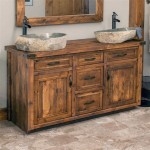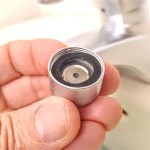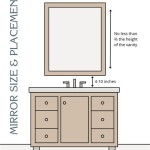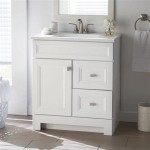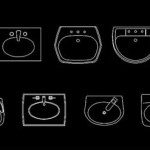How To Install Bathroom Safety Grab Bars
Bathroom safety is a critical concern for individuals of all ages and abilities. Falls in the bathroom are a leading cause of injury, particularly for seniors and those with mobility issues. Installing bathroom safety grab bars is a proactive measure that can significantly reduce the risk of accidents and promote independence in the bathroom. This article provides a comprehensive guide on how to properly install bathroom safety grab bars, ensuring maximum safety and stability.
Before embarking on the installation process, careful planning is essential. This involves assessing the specific needs of the user, identifying suitable locations for the grab bars, and selecting appropriate grab bar types and materials. A thorough understanding of these preliminary steps is crucial for a successful and safe installation.
Planning and Preparation
The initial phase of installing grab bars centers around meticulous planning. This involves assessing the user's physical capabilities, identifying potential hazards, and selecting the most appropriate locations for the grab bars. Consider the user's reach, balance, and specific needs when determining placement. For example, a grab bar near the toilet can assist with sitting and standing, while a bar in the shower can provide support during bathing.
Grab bar placement should also consider the layout of the bathroom. Ensure that the bars are positioned to provide adequate support and do not obstruct movement. Avoid placing grab bars in areas where they may be easily bumped or accidentally grabbed, as this can lead to instability. Common locations include near the toilet, inside the shower or bathtub, and adjacent to the sink. These locations offer different levels of support and address varying needs within the bathroom environment.
Selecting the right type of grab bar is equally important. Grab bars are available in various lengths, styles, and materials. The length of the bar should be sufficient to provide a secure grip, while the style should complement the bathroom décor. Material selection is crucial for durability and resistance to corrosion, especially in a humid environment like a bathroom. Stainless steel is a popular choice for its strength, corrosion resistance, and ease of cleaning.
Consider the mounting style of the grab bar. Flange-mounted grab bars are typically the most secure, as they are attached directly to the wall studs. Suction cup grab bars are a temporary solution and are not recommended for long-term use or for individuals with significant mobility issues. They are best used for minor support and should never be relied upon as the primary safety device. Toggle bolt-mounted grab bars offer an alternative when wall studs are not accessible, but they require careful installation to ensure adequate holding power.
Before starting the installation, gather all necessary tools and materials. This includes the grab bar itself, a stud finder, a level, a drill with appropriate drill bits (including a tile drill bit if necessary), a measuring tape, a pencil, safety glasses, and appropriate fasteners (screws or bolts). Having all the tools readily available will streamline the installation process and minimize potential delays.
Locating Wall Studs and Marking the Installation Points
Accurate location of wall studs is paramount for a secure grab bar installation. Wall studs provide the necessary structural support to withstand the weight and force exerted on the grab bar. Using a stud finder, systematically scan the wall area where the grab bar is to be installed. Mark the location of each stud with a pencil. Verify the accuracy of the stud finder by tapping on the wall; a solid sound indicates the presence of a stud, while a hollow sound suggests an empty cavity.
Once the studs are located, determine the precise placement of the grab bar. Hold the grab bar against the wall at the desired height and angle. Use a level to ensure that the bar is perfectly horizontal or vertical, depending on the intended orientation. With the grab bar held in place, mark the locations of the mounting holes on the wall, aligning them with the previously marked stud locations. This step requires precision to ensure that the screws or bolts will penetrate the studs securely.
If the grab bar is to be installed on a tiled wall, use a tile drill bit to create pilot holes through the tile. This prevents the tile from cracking or chipping during the installation process. Apply gentle pressure when drilling through the tile, and use a slow, steady speed. Once the pilot holes are drilled through the tile, switch to a drill bit suitable for the wall material behind the tile (e.g., wood or drywall) and continue drilling into the stud.
When working with fiberglass or acrylic shower walls, exercise extra caution. These materials are more susceptible to cracking and require specialized drilling techniques. Use a slow, steady speed and apply minimal pressure to avoid damaging the shower wall. Consider using a hole saw to create clean, precise holes for the mounting hardware.
For installations where studs are not accessible, alternative mounting methods may be necessary. Toggle bolts can be used to provide support in drywall or plaster walls. However, it is crucial to select toggle bolts with sufficient weight-bearing capacity and to follow the manufacturer's instructions carefully. Reinforcement plates can also be installed behind the wall to provide additional support. Consult with a professional contractor if you are unsure about the best mounting method for your specific situation.
Installing the Grab Bar and Ensuring Stability
With the mounting holes drilled, the next step is to install the grab bar using appropriate fasteners. For installations into wall studs, use screws or bolts that are long enough to penetrate the stud at least 1.5 inches. This ensures a secure and stable connection. Apply sealant around the mounting holes to prevent water from penetrating the wall and causing damage. Follow the manufacturer's instructions for the specific type of grab bar and fasteners being used.
Insert the screws or bolts through the mounting flanges of the grab bar and into the pre-drilled holes. Tighten the fasteners securely, but avoid over-tightening, which can strip the threads or damage the wall material. Use a wrench or screwdriver to ensure that the screws or bolts are snug and that the grab bar is firmly attached to the wall. Periodically check the tightness of the fasteners to ensure that the grab bar remains securely mounted.
After the grab bar is installed, test its stability by applying moderate pressure to various points along the bar. Ensure that there is no movement or wobbling. If the grab bar feels loose or unstable, re-tighten the fasteners or consider using longer or stronger screws or bolts. If the problem persists, consult with a professional contractor to assess the installation and provide further assistance.
For installations using toggle bolts, carefully follow the manufacturer's instructions for inserting and tightening the bolts. Ensure that the toggle wings are fully deployed behind the wall and that the bolts are tightened securely. Test the stability of the grab bar by applying moderate pressure, as described above. If the grab bar feels unstable, consider using additional toggle bolts or reinforcing the wall behind the grab bar.
Once the grab bar is securely installed, clean the surrounding area to remove any debris or residue from the installation process. Inspect the grab bar and the surrounding wall for any signs of damage or weakness. If any issues are identified, address them promptly to prevent further problems. Periodically inspect the grab bar for signs of wear or damage, such as rust, cracks, or loose fasteners. Replace the grab bar if any significant issues are detected.
Finally, instruct the user on the proper use of the grab bar. Explain how to grip the bar securely and how to use it to assist with sitting, standing, and maneuvering in the bathroom. Emphasize the importance of using the grab bar whenever assistance is needed and of avoiding over-reliance on the bar. Proper education and training can help to ensure that the grab bar is used safely and effectively.

How To Install Bathroom Safety Bars True Value

Proper Shower Grab Bar Placement Keeps Your Family Safe Improveit

How And Where To Install Bathroom Safety Rails Grab Bars

Proper Shower Grab Bar Placement Keeps Your Family Safe Improveit

Installing Grab Bars In Your Bathroom A Complete Guide

Shower Bar How To Install Bathroom Grab Bars Diy Family Handyman

What Type Of Safety Grab Bars For The Toilet Shower Bathroom Should You Seniorcare Singapore S Most Reliable Elderly

Grab Bar Installation Hunker Bars In Bathroom Shower

Shower Grab Bar Install 101 Home Fixated

Where Should Toilet Grab Bars Be Installed Freedom Showers
Related Posts
